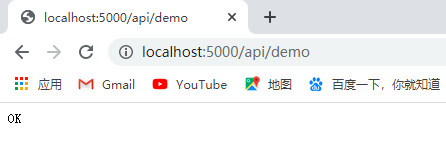| DotNetCore深入了解:HTTPClientFactory类 | 您所在的位置:网站首页 › HMlclient › DotNetCore深入了解:HTTPClientFactory类 |
DotNetCore深入了解:HTTPClientFactory类
|
一、HttpClient使用
在C#中,如果我们需要向某特定的URL地址发送Http请求的时候,通常会用到HttpClient类。会将HttpClient包裹在using内部进行声明和初始化,如下面的代码: using (var httpClient = new HttpClient()) { // 逻辑处理代码 }HttpClient类包含了许多有用的方法,使用上面的代码,可以满足绝大多数的需求,但是如果对其使用不当时,可能会出现意想不到的事情。 上面代码的技术范点:当你使用继承了IDisposable接口的对象时,建议在using代码块中声明和初始化,当using代码段执行完成后,会自动释放该对象而不需要手动进行显示Dispose操作。 对象所占用资源应该确保及时被释放掉,但是,对于网络连接而言,这是错误的。具体原因有下面两点: 网络连接是需要耗费一定时间的,频繁开启与关闭连接,性能会受到影响。 开启网络连接时会占用低层socket资源,但在HttpClient调用其本身的Dispose方法时,并不能立即释放该资源,这意味着你的程序可能会因为耗尽连接资源而产生预期之外的异常。看下面一段代码 using System; using System.Collections.Generic; using System.Linq; using System.Net.Http; using System.Text; using System.Threading.Tasks; namespace HttpClientDemo { class Program { static void Main(string[] args) { //using (var httpClient = new HttpClient()) //{ // // 逻辑处理代码 //} HttpAsync(); Console.WriteLine("Hello World!"); Console.Read(); } public static async void HttpAsync() { for (int i = 0; i < 10; i++) { using (var client = new HttpClient()) { var result = await client.GetAsync("http://www.baidu.com"); Console.WriteLine($"{i}:{result.StatusCode}"); } } } } }运行项目输出结果后,通过netstate查看下TCP连接情况,会发现连接依然存在,状态为“TIME_WAIT”(继续等待看是否还有延迟的包会传输过来)。 这里就会出现一个坑:在高并发的情况下,连接来不及释放,socket连接被耗尽,耗尽之后就会出现错误。就是会出现“各种套接字问题”。 那么如何解决这个问题呢?比较好的解决方法是延长HttpClient对象的使用寿命,实现HttpClient对象的复用,比如对其建一个静态的对象: private static HttpClient Client = new HttpClient();我们使用这种方式优化上面的代码 using System; using System.Net.Http; namespace HttpClientDemo { class Program { private static readonly HttpClient _client = new HttpClient(); static void Main(string[] args) { HttpAsync(); Console.WriteLine("Hello World"); Console.ReadKey(); } public static async void HttpAsync() { for (int i = 0; i < 10; i++) { var result = await _client.GetAsync("http://www.baidu.com"); Console.WriteLine($"{i}:{result.StatusCode}"); } } } }这样调整HttpClient的引用后,虽然可以解决一些问题,但是仍然存在一些问题: 因为是复用的HttpClient,那么一些公共的设置就没办法灵活的调整,如请求头的自定义。 因为HttpClient请求每个url时,会缓存url对应的主机ip,从而会导致DNS更新失效。为了解决这些问题,在.NET Core 2.1中引入了新的HttpClientFactory类。 二、HttpClientFactory使用微软在.NET Core 2.1中新引入了HttpClientFactory类,具有如下的优势: HttpClientFactory很高效,可以最大程度上节省系统的sock而。 Factory,顾名思义HttpClientfactory就是HttpClient的工厂,内部已经帮我们处理好了对HttpClient的管理,不需要我们人工进行对象释放,同时,支持自定义请求头、支持DNS更新等。我们用一个ASP.NET Core的程序作为示例,它的用法非常简单,首先是对其进行IOC注册: public void ConfigureServices(IServiceCollection services) { // 注入HttpClient services.AddHttpClient("client_1", config => //这里指定的name=client_1,可以方便我们后期服用该实例 { config.BaseAddress = new Uri("http://www.baidu.com"); config.DefaultRequestHeaders.Add("header_1", "header_1"); }); services.AddHttpClient("client_2", config => { config.BaseAddress = new Uri("https://www.qq.com/"); config.DefaultRequestHeaders.Add("header_2", "header_2"); }); services.AddHttpClient(); services.AddControllers(); }然后在控制器里面通过IHttpClientFactory创建一个HttpClient对象,之后的操作跟以前一样,但不需要担心其内部资源的释放: using System.Net.Http; using System.Threading.Tasks; using Microsoft.AspNetCore.Mvc; namespace HttpClientFactoryDemo.Controllers { [Route("api/[controller]")] [ApiController] public class DemoController : ControllerBase { IHttpClientFactory _httpClientFactory; /// /// 通过构造函数实现注入 /// /// public DemoController(IHttpClientFactory httpClientFactory) { _httpClientFactory = httpClientFactory; } public async Task Get() { var client = _httpClientFactory.CreateClient("client_1"); //复用在Startup中定义的client_1的httpclient var result = await client.GetStringAsync("/page1.html"); var client2 = _httpClientFactory.CreateClient(); //新建一个HttpClient var result2 = await client.GetAsync("http://www.baidu.com"); return result2.StatusCode.ToString(); } } }程序运行结果:
AddHttpClient的源码: public static IServiceCollection AddHttpClient(this IServiceCollection services) { if (services == null) { throw new ArgumentNullException(nameof(services)); } services.AddLogging(); services.AddOptions(); // // Core abstractions // services.TryAddTransient(); services.TryAddSingleton(); // // Typed Clients // services.TryAdd(ServiceDescriptor.Singleton(typeof(ITypedHttpClientFactory), typeof(DefaultTypedHttpClientFactory))); // // Misc infrastructure // services.TryAddEnumerable(ServiceDescriptor.Singleton()); return services; }看下面这句代码: services.TryAddSingleton();这里添加依赖注入的时候为IHttpClientFactory接口绑定了DefaultHttpClientFactory类。 我们在来看IHttpClientFactory接口中关键的CreateClient方法: public HttpClient CreateClient(string name) { if (name == null) { throw new ArgumentNullException(nameof(name)); } var entry = _activeHandlers.GetOrAdd(name, _entryFactory).Value; var client = new HttpClient(entry.Handler, disposeHandler: false); StartHandlerEntryTimer(entry); var options = _optionsMonitor.Get(name); for (var i = 0; i < options.HttpClientActions.Count; i++) { options.HttpClientActions[i](client); } return client; }从代码中我们可以看出:HttpClient的创建不在是简单的new HttpClient(),而是传入了两个参数:HttpMessageHandler handler与bool disposeHandler。 disposeHandler参数为false时表示要重用内部的handler对象。handler参数则从上一句的代码中可以看出是以name为键值从一字典中取出,又因为DefaultHttpClientFactory类是通过TryAddSingleton方法注册的,也就意味着其为单例,那么这个内部字典便是唯一的,每个键值对应的ActiveHandlerTrackingEntry对象也是唯一,该对象内部中包含着handler。 下一句代码StartHandlerEntryTimer(entry); 开启了ActiveHandlerTrackingEntry对象的过期计时处理。默认过期时间是2分钟。 internal void ExpiryTimer_Tick(object state) { var active = (ActiveHandlerTrackingEntry)state; // The timer callback should be the only one removing from the active collection. If we can't find // our entry in the collection, then this is a bug. var removed = _activeHandlers.TryRemove(active.Name, out var found); Debug.Assert(removed, "Entry not found. We should always be able to remove the entry"); Debug.Assert(object.ReferenceEquals(active, found.Value), "Different entry found. The entry should not have been replaced"); // At this point the handler is no longer 'active' and will not be handed out to any new clients. // However we haven't dropped our strong reference to the handler, so we can't yet determine if // there are still any other outstanding references (we know there is at least one). // // We use a different state object to track expired handlers. This allows any other thread that acquired // the 'active' entry to use it without safety problems. var expired = new ExpiredHandlerTrackingEntry(active); _expiredHandlers.Enqueue(expired); Log.HandlerExpired(_logger, active.Name, active.Lifetime); StartCleanupTimer(); }先是将ActiveHandlerTrackingEntry对象传入新的ExpiredHandlerTrackingEntry对象。 public ExpiredHandlerTrackingEntry(ActiveHandlerTrackingEntry other) { Name = other.Name; _livenessTracker = new WeakReference(other.Handler); InnerHandler = other.Handler.InnerHandler; }在其构造方法内部,handler对象通过弱引用方式关联着,不会影响其被GC释放。 然后新建的ExpiredHandlerTrackingEntry对象被放入专用的队列。 最后开始清理工作,定时器的时间间隔设定为每10秒一次。 internal void CleanupTimer_Tick(object state) { // Stop any pending timers, we'll restart the timer if there's anything left to process after cleanup. // // With the scheme we're using it's possible we could end up with some redundant cleanup operations. // This is expected and fine. // // An alternative would be to take a lock during the whole cleanup process. This isn't ideal because it // would result in threads executing ExpiryTimer_Tick as they would need to block on cleanup to figure out // whether we need to start the timer. StopCleanupTimer(); try { if (!Monitor.TryEnter(_cleanupActiveLock)) { // We don't want to run a concurrent cleanup cycle. This can happen if the cleanup cycle takes // a long time for some reason. Since we're running user code inside Dispose, it's definitely // possible. // // If we end up in that position, just make sure the timer gets started again. It should be cheap // to run a 'no-op' cleanup. StartCleanupTimer(); return; } var initialCount = _expiredHandlers.Count; Log.CleanupCycleStart(_logger, initialCount); var stopwatch = ValueStopwatch.StartNew(); var disposedCount = 0; for (var i = 0; i < initialCount; i++) { // Since we're the only one removing from _expired, TryDequeue must always succeed. _expiredHandlers.TryDequeue(out var entry); Debug.Assert(entry != null, "Entry was null, we should always get an entry back from TryDequeue"); if (entry.CanDispose) { try { entry.InnerHandler.Dispose(); disposedCount++; } catch (Exception ex) { Log.CleanupItemFailed(_logger, entry.Name, ex); } } else { // If the entry is still live, put it back in the queue so we can process it // during the next cleanup cycle. _expiredHandlers.Enqueue(entry); } } Log.CleanupCycleEnd(_logger, stopwatch.GetElapsedTime(), disposedCount, _expiredHandlers.Count); } finally { Monitor.Exit(_cleanupActiveLock); } // We didn't totally empty the cleanup queue, try again later. if (_expiredHandlers.Count > 0) { StartCleanupTimer(); } }上述方法核心是判断是否handler对象已经被GC,如果是的话,则释放其内部资源,即网络连接。 回到最初创建HttpClient的代码,会发现并没有传入任何name参数值。这是得益于HttpClientFactoryExtensions类的扩展方法。 public static HttpClient CreateClient(this IHttpClientFactory factory) { if (factory == null) { throw new ArgumentNullException(nameof(factory)); } return factory.CreateClient(Options.DefaultName); }Options.DefaultName的值为string.Empty。 参考:https://blog.csdn.net/weixin_34321753/article/details/91362881 https://www.cnblogs.com/lizhizhang/p/9502862.html |
【本文地址】

